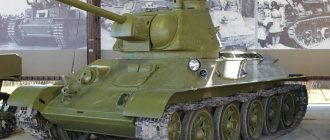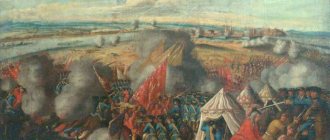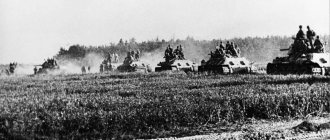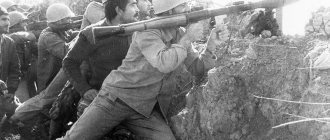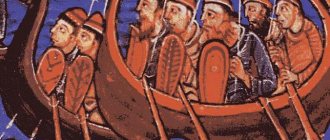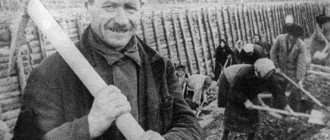The Battle of Kursk (Kursk Bulge) is a strategic salient in the area of the city of Kursk. From July 5 to August 23, 1943, one of the most significant battles of the Great Patriotic War (1941–1945) took place here. After the defeat at Stalingrad, the German army wanted to take revenge and regain the offensive initiative. The General Staff of the Wehrmacht (German armed forces) developed Operation Citadel. Its goal was to encircle a huge group of Red Army troops in the area of the city of Kursk. To do this, it was planned to strike from the north (Army Group "Center" from Orel) and the south (Army Group "South" from Belgorod) towards each other. Having united, the Germans formed a cauldron for two fronts of the Red Army at once (Central and Voronezh). After this, the troops of the German army had to send their forces to Moscow.
Army Group Center was led by Field Marshal Hans Günther Adolf Ferdinand von Kluge (1882 - 1944), and Army Group South was led by Field Marshal Erich von Manstein (1887 - 1973). To implement Operation Citadel, the Germans concentrated enormous forces. In the north, the organizational strike force was led by the commander of the 9th Army, Colonel General Otto Moritz Walter Model (1891 - 1945), and in the south, the coordination and leadership of the tank units was carried out by Colonel General Hermann Hoth (1885 - 1971).
Scheme of the Battle of Kursk
The Headquarters of the Supreme High Command (the body of highest military command that exercised strategic leadership of the Soviet Armed Forces during the Great Patriotic War of 1941–1945) decided to first conduct a defensive battle in the Battle of Kursk. Next, having withstood the enemy’s blows and exhausted his forces, at a critical moment launch crushing counterattacks against the enemy. Everyone understood that the most difficult thing in this operation would be to withstand the enemy's onslaught. The Kursk Bulge was divided into two parts - the northern and southern faces. In addition, understanding the scale and significance of the upcoming operation, the reserve Steppe Front was located behind the ledge under the command of Colonel General Ivan Stepanovich Konev (1897 - 1973).
Northern face of the Kursk Bulge
The northern face is also called the Oryol-Kursk Bulge. The length of the defense line was 308 km. The Central Front was located here under the command of Army General Konstantin Konstantinovich Rokossovsky (1896 - 1968). The front included five combined arms armies (60, 65, 70, 13 and 48). The front reserve was mobile. It included the 2nd Tank Army, as well as the 9th and 19th Tank Corps. Not far from Kursk, in the village of Svoboda, the headquarters of the front commander was located. Currently there is a museum dedicated to the Battle of Kursk on this site. Here they recreated the dugout of K.K. Rokossovsky, from which the commander led the battles. The interior is very modest, just the bare necessities. There is an HF communication device on the bedside table in the corner. Using it, one could contact the General Staff and Headquarters at any time. Adjacent to the main room is a rest room, where the commander could restore his strength by resting his head on a camp metal bed. Naturally, there was no electric lighting; simple kerosene lamps burned. At the entrance to the dugout there was a small room for the duty officer. This is how a man lived in combat conditions, under whose command were hundreds of thousands of people and a huge amount of various equipment.
Dugout of Rokossovsky K.K.
Based on intelligence data and his combat experience, Rokossovsky K.K. determined with a high degree of certainty the direction of the main German attack on the Olkhovatka-Ponyri section. The 13th Army occupied positions in this place. Its front segment was reduced to 32 kilometers and reinforced with additional forces. To the left of it, covering the Fatezh-Kursk direction, was the 70th Army. Positions on the right flank of the 13th Army, in the Maloarkhangelsk region, were occupied by the 48th Army.
The artillery preparation carried out by the Red Army troops against Wehrmacht positions on the morning of July 5, 1943 played a certain role in the beginning of the battle. The Germans were simply dumbfounded by surprise. In the evening, Hitler's farewell address was read to them. Full of determination, early in the morning they prepared to go on the attack and defeat the enemy to smithereens. And so, at the most inopportune moment, thousands of Russian shells fell on the Germans. Having suffered losses and lost offensive fervor, the Wehrmacht began its attack only 2 hours after the scheduled time. Despite the artillery bombardment, the power of the Germans was very strong. The main blow was delivered to Olkhovatka and Ponyri by three infantry and four tank divisions. Four more infantry divisions went on the offensive at the junction between the 13th and 48th armies, to the left of Maloarkhangelsk. Three infantry divisions attacked the right flank of the 70th Army, in the direction of the Teplovsky Heights. Near the village of Soborovka there is a large field along which German tanks walked and walked towards Olkhovatka. Artillerymen played a major role in the battle. At the cost of incredible efforts, they resisted the advancing enemy. To strengthen the defense, the command of the Central Front ordered some of our tanks to be dug into the ground, thus increasing their invulnerability. To protect the Ponyri station, the surrounding area was covered with numerous minefields. In the midst of the battle this provided great assistance to our troops.
In addition to the already known tanks, the Germans used their new self-propelled guns (self-propelled artillery units) Ferdinand here. They were specifically designed to destroy enemy tanks and fortifications. Ferdinand weighed 65 tons and had frontal armor twice that of the Tiger heavy tank. Our guns could not hit self-propelled guns only if they were the most powerful and at very close range. Ferdinand’s gun penetrated armor over 100 mm. at a distance of 2 km. (armor of the Tiger heavy tank). The self-propelled gun had an electric transmission. Two internal combustion engines rotated the rotors of two generators. From them, electric current was transmitted to two electric motors that drove the self-propelled tracks. At that time this was a very interesting decision. Self-propelled guns Ferdinand, made with the latest technology, were used only on the northern front of the Kursk Bulge (they were not on the southern front). The Germans formed two heavy anti-tank battalions (653 and 654) with 45 vehicles each. Seeing this colossus crawling towards you through the sights of a cannon, but nothing can be done, is not a sight for the faint of heart.
The fighting was very fierce. The Wehrmacht was rushing forward. It seemed that this German power could not be stopped. Only thanks to the talent of K.K. Rokossovsky, who created a deeply layered defense in the direction of the main attack and concentrated more than half of the front’s personnel and artillery in this sector, was it possible to withstand the enemy’s onslaught. In seven days, the Germans brought almost all their reserves into the battle and advanced only 10-12 km. They never managed to break through the tactical defense zone. Soldiers and officers fought heroically for their land. The poet Evgeny Dolmatovsky wrote the poem “Ponyri” about the defenders of the Oryol-Kursk Bulge. It contains these lines:
There were no mountains or rocks here,
There were no ditches or rivers here.
Here a Russian man stood,
Soviet man.
By July 12, the Germans were exhausted and they stopped the offensive. Rokossovsky K.K. tried to take care of the soldiers. Of course, war is war and losses are inevitable. It’s just that Konstantin Konstantinovich always had many fewer of these losses. He spared neither mines nor shells. More ammunition can be made, but it takes a lot of time to raise a person and make him a good soldier. People felt this and always treated him with respect. Rokossovsky K.K. and previously had great fame among the troops, but after the Battle of Kursk his fame soared very high. They started talking about him as an outstanding commander. It was not for nothing that he commanded the Victory Parade on June 24, 1945, which was hosted by G.K. Zhukov. The country's leadership also valued him. Even Stalin himself I.V. after the Great Patriotic War, he apologized to him for his arrest in 1937. He invited the marshal to his dacha in Kuntsevo. Walking past the flowerbed with him, Joseph Vissarionovich broke a bouquet of white roses with his bare hands. Handing them to K.K. Rokossovsky, he said: “Before the war, we greatly offended you. Please forgive us..." Konstantin Konstantinovich noticed that the thorns of the roses injured the hands of Stalin I.V., leaving small drops of blood.
On November 26, 1943, near the village of Tyoploye, the first monument to military glory during the Great Patriotic War was unveiled. This modest obelisk glorifies the feat of the artillerymen. Then many more monuments will be erected along the defense line of the Central Front. Museums and memorials will be opened, but for veterans of the Battle of Kursk this simple monument to artillerymen will be the most expensive, because it is the first.
Monument to artillerymen near the village. Warm
Defensive stage
The leadership of the Red Army decided at the initial stage to conduct defensive actions. The idea of the Soviet command was to first weaken the enemy’s forces, destroy his new tanks, and then bring reserves into battle and launch a counteroffensive. A defense in depth was built near Kursk. Before this, the Red Army had not undertaken the construction of such powerful defensive structures.
Eight fortified areas were erected, and the entire depth of the territory’s engineering equipment was almost 300 kilometers. Not just trenches were built, but hollows, minefields and anti-tank ditches.
From intelligence reports, the Soviet military command learned the exact date and time of the start of Operation Citadel - 3 a.m. on July 5. Our command decided to conduct artillery counter-preparation. At 1:10 a.m. on July 5, artillery strikes struck concentrations of large groups of German troops and military equipment. During the period of artillery preparation the following targets were suppressed:
- accumulations of armored vehicles and infantry;
- observation points;
- batteries in firing positions.
The enemy forces suffered significant losses and delayed the start of the operation for several hours. It was not until half past five in the morning that the planned attack began. During the Kursk operation, the Soviet command for the first time used large armored formations to hold a wide defensive front.
The Wehrmacht planned to carry out attacks from the north and south along the Orel-Belgorod line. The strike groups were supposed to close the breakthrough in the Kursk area and encircle parts of the Central and Voronezh fronts.
Anti-tank artillery in the north fired effectively at German tanks , but well-protected enemy armor was able to overcome the Soviet defenses in some places. However, there was no lightning breakthrough. Behind the first defensive line there were continuous minefields. We had to wait for sappers, and all this time German tanks were subjected to massive shelling, and Soviet Il-2 attack aircraft maintained air superiority.
Southern face of the Kursk Bulge
On the southern front, the defense was held by the Voronezh Front under the command of Army General Nikolai Fedorovich Vatutin (1901 - 1944). The length of the defense line was 244 km. The front included five combined arms armies (38, 40, 6th Guards and 7th Guards - stood in the first echelon of defense, 69th Army and 35th Guards Rifle Corps - in the second echelon of defense). The front reserve was mobile. It included the 1st Tank Army, as well as the 2nd and 5th Guards Tank Corps. Before the Germans began their offensive, artillery preparation was carried out, which slightly weakened their first onslaught. Unfortunately, it was extremely difficult to determine exactly the direction of the main attack on the Voronezh front. It was carried out by the Wehrmacht in the Oboyan area, against the positions of the 6th Guards Army. The Germans tried to build on their success by advancing along the Belgorod-Kursk highway, but they failed. Units of the 1st Tank Army were sent to help the 6th Army. The Wehrmacht sent a diversionary attack on the 7th Guards Army in the Korocha area. Taking into account the current situation, the Headquarters of the Supreme High Command ordered Colonel General Konev to transfer two armies from the Steppe Front to the Voronezh Front - the 5th combined arms and the 5th tank. Having not advanced sufficiently near Oboyan, the German command decided to transfer the main attack to the Prokhorovka area. This direction was covered by the 69th Army. In addition to the Tigers, the Wehrmacht used its new Pz tanks on the southern front of the Kursk Bulge. V "Panther" in the amount of 200 pcs.
Preparing for battles
At the beginning of 1943, the front line in the Kursk area curved and formed a large protrusion 150 by 200 km, jutting into German territory, which was called the Kursk Bulge. This configuration left no doubt about where the main events of the coming months would unfold. During April - June 1943, the warring parties prepared for the summer battles.
The German army, weakened during the winter battles near Stalingrad, could not conduct a large-scale offensive. Many German military leaders, in particular Generals Guderian and Manstein, believed that in the summer the German army needed a defensive strategy that would save forces and resources. They hoped that defensive actions would lead to exhaustion of the Soviet troops.
But the majority of members of the German command were in favor of an offensive using the latest Tiger and Panther tanks, which were superior in combat qualities to the Soviet T-34. The start of the offensive operation of German troops called “Citadel” was scheduled for July 5.
Soviet intelligence played a big role in how events developed in the Kursk salient. Since the beginning of 1943, the name of the operation was often heard in interceptions of secret messages from the Wehrmacht command and Hitler. On April 12, 1943, Stalin was delivered a Russian translation of German Directive No. 6 “On the plan for Operation Citadel,” endorsed by the German military services. Moreover, Hitler’s signature was not yet on the document. She appeared only three days later. This information was provided by an agent with the pseudonym “Werther”. The intelligence officer's real name is unknown, but it is believed that he was an employee of the High Command.
Tank battle near Prokhorovka
On July 12, southwest of Prokhorovka, the Germans launched an offensive. The command of the Voronezh Front sent here the 5th Guards Tank Army with two attached tank corps and the 33rd Guards Rifle Corps a little earlier. One of the largest tank battles in the entire history of World War II took place here (09/01/1939 – 09/03/1945). To stop the advance of the 2nd SS Tank Corps (400 tanks), the corps of the 5th Guards Tank Army (800 tanks) were thrown into a frontal attack. Despite the seemingly large advantage in the number of tanks, the 5th Guards Tank Army was inferior in their “quality.” It consisted of: 501 T-34 tanks, 264 light T-70 tanks and 35 heavy Churchill III tanks with low speed and insufficient maneuverability. Our tanks could not compare with the enemy in striking range. To knock out the German Pz. VI "Tiger" our T-34 tank needed to approach at a distance of 500 meters. The Tiger itself with 88 mm. with a cannon he effectively fought a duel at a distance of up to 2000 meters.
It was possible to fight in such conditions only in close combat. But it was necessary to shorten the distance in some incomprehensible way. Despite everything, our ordinary Soviet tank crews survived and stopped the Germans. Honor and praise to them for this. The price of such a feat was very high. Losses in the tank corps of the 5th Guards Army reached 70 percent. Currently, Prokhorovskoe Field has the status of a museum of federal significance. All these tanks and guns are installed here in memory of the Soviet people who, at the cost of their lives, turned the tide of the war.
Part of the exposition of the Prokhorovskoe Field memorial
Strengths of the parties
The advantage was on the side of the Red Army. The number of Soviet troops was 1,200,000 people (against 900 thousand for the enemy), the number of tanks was 3,500 (2,700 for the Germans), guns were 20,000 (10,000), and aircraft were 2,800 (2,500).
The German army was replenished with heavy (medium) Tiger (Panther) tanks, Ferdinand self-propelled guns (self-propelled guns), and Foke-Wulf 190 aircraft. Innovations on the Soviet side were the St. John's wort cannon (57 mm), capable of penetrating the armor of the Tiger, and anti-tank mines, which caused significant damage to them.
Completion of the Battle of Kursk
Having withstood the onslaught of the Germans on the Northern front of the Kursk Bulge, on July 12, the troops of the Bryansk Front and the left wing of the Western Front launched an offensive in the Oryol direction. A little later, on July 15, the troops of the Central Front struck in the direction of the village of Kromy. Thanks to the efforts of the attackers, on August 5, 1943, the city of Orel was liberated. On July 16, the troops of the Voronezh Front and then on July 19, the troops of the Steppe Front also went on the offensive. Developing a counterattack, on August 5, 1943, they liberated the city of Belgorod. In the evening of the same day, fireworks were given for the first time in Moscow in honor of the liberation of Orel and Belgorod. Without losing the initiative, the troops of the Steppe Front (with the support of the Voronezh and Southwestern Fronts) liberated the city of Kharkov on August 23, 1943.
The Battle of Kursk (Kursk Bulge) is one of the largest battles of the Second World War. A huge number of people took part in it. Many tanks, planes, guns and other equipment were involved. Here the initiative finally passed to the Red Army and the whole world realized that Germany had lost the war. More systematic information about the Second World War and the Great Patriotic War, when events follow one another, can be found in the article “Victory Train”.
